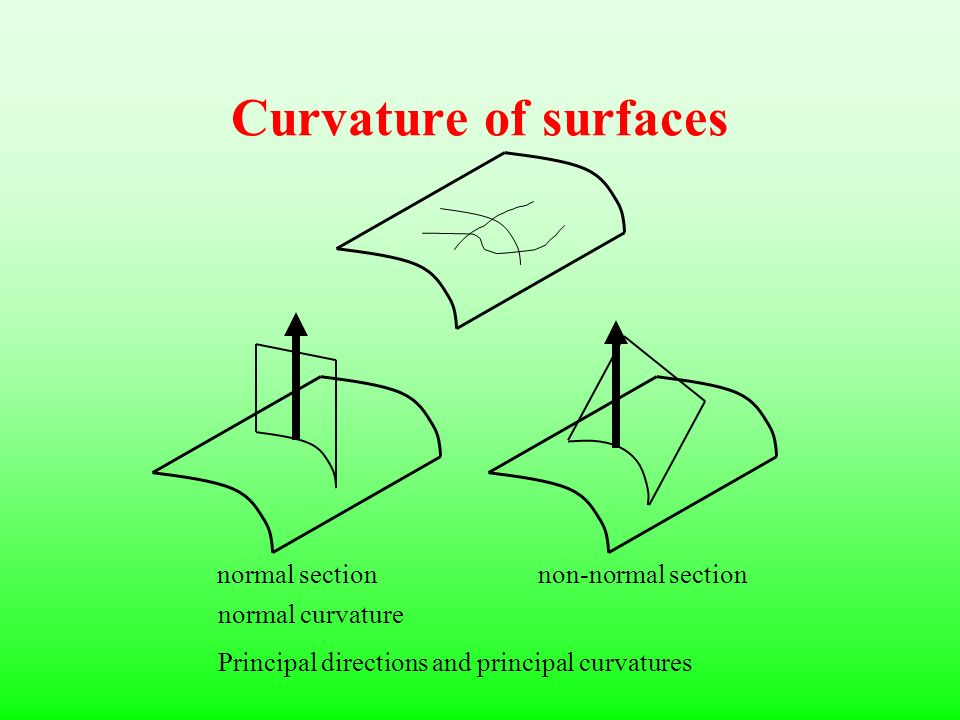
Introduction:
Welcometo the fascinating realm beyond flatland, where the world of mathematics transcends the confines of Euclidean geometry. In this exploration, we embark on a journey into the intricate and captivating domain of manifold spaces, delving deep into the concept of curvature. So, fasten your seatbelts as we navigate the curves and twists that define the mathematical landscapes beyond flatland.
History of Manifolds
First of all, Gauss considered the abstract spaces as the mathematical objects in their own right and discussed a method to compute the curvature of space without considering an ambient space in which the surface lies. The differential calculus was used in the last quarter of the 18th centaury for better understanding of the problems of geometry from which the foundation of Differential Geometry was laid down. The German word Mannigfaltigkeit was used by Riemannian for the manifold and later William Kingdom Clifford translated it as manifoldness. The study of manifolds generalizes the concept of curves and surfaces and highly related to linear algebra, topology, group theory and theory of relativity. A habilitation lecture was delivered by Bernhard Riemannat Gottingen in 1854 in which he discussed various possibilities to endow a space of arbitrary dimension with a metric and described the formal development of coordinate systems and charts. The concept of Riemannian surface was introduced by Riemannian in 1857 and generalized the theory of surfaces for higher dimension. An intrinsic definition of a differentiable manifold was given by Hermann Weyl and later it was shown by Whitney that the manifold intrinsically defined by charts could be embedded in a Euclidean space. J. A. Schouten and D. V. Dantzig tried to transfer the results of Riemannian space with affine connection to a space with complex structure in 1930. A Space with same connection was also discussed by Kaehler in 1933 and now the space is known as a Kaehler space. Further, the Kaehler space has been studied by S. Bochner, H. Guggenheimer, A. Lichnerowicz and the several authors. In 1947, A. Weyl proved that there exist tensor field F of type (1,1) in a complex space such that the square of F is negative of the unity. The study of complex and almost complex spaces has been carried out by M. Aple, S. Bochner, M. Ako, W. M. Boothby, B. Calabi, S. S. Chern and many more geometers from time to time.
The Basics of Manifold Spaces
To comprehend curvature in manifold spaces, let’s first understand the basics. Manifolds are mathematical objects that resemble the spaces we encounter in everyday life but with a crucial distinction—they are locally similar to Euclidean space but may have a more complex global structure. From surfaces embedded in three-dimensional space to abstract mathematical spaces, manifolds are the canvas upon which we paint the tapestry of curvature. Following are some of the basic terminologies used in the study of curvature of any dimensional space:
Lie Bracket
A Lie bracket [ ,] of vector fields X and Y is defined by
[X,Y ](p)(f) = X_P (Yf) – Y_P (Xf), For all p∈ M,f∈ C^∞ (M).
In general, the Lie bracket is represented by [X,Y] = XY – YX and is a smooth tangent vector field on a manifold M.
Connection
Let M be an n-dimensional manifold then a bilinear map ∇∶χ(M) × χ(M)⟶ ψ(M) is said to be an affine connection if it satisfies the following conditions
∇_(∝X+βY) Z=α∇_X Z+β∇_Y Z
∇_(fX+gY) Z=f∇_X Z+g∇_Y Z
∇_X (fY + gZ) = f∇_X Y + (Xf)Y + g∇_Y Z + (Xg)Z
For all α,β∈R,f,g∈C^∞ (M) and X,Y,Z∈χ(M)
Torsion Tensor
Let M be a smooth manifold with an affine connection∇, then a mapping
T: χ(M) × χ(M)⟶χ(M),given by
T(X,Y ) = ∇_X Y – ∇_Y X – [X,Y ]
is called a torsion tensor with respect to∇, whereX,Y ∈χ(M).
Differentiable Manifold
Let M be a topological space and assume that M satisfies the Housdorff separation axiom. Let M be a Housdroff space, a differentiable structure on M is is a collection of open charts
(U_i,ϕ_i )i∈⋀ On M where ϕ_i U_I is an open subset of R^nsuch that,M=U_(I∈⋀) U_I.
For each pair i,j∈⋀ the mapping ϕ_j ϕ_i^(-1)is a differentiable mapping of ϕ_i (U_I⋂U_j) onto ϕ_j (U_I⋂U_j).
Topological Manifold
A topological space M is called n dimensional smooth manifold if
It is a Housdroff space.
It is a second countable space.
It is a locally Euclidean space of dimension n.
It comes with a family {(U_α, φ_α )} with U_α⊂M, such that M=(⋃_α▒〖U_α)〗
The pair (U_α,φ_α ) is called charts and the family {(U_α, φ_α )} are called atlas.
Semi-Riemannian metric
A semi Riemannian metric or pseudo-Riemannian metric is a tensor field g of type (0, 2) which satisfies the following conditions
g is symmetric i.e. g(X, Y ) = g(Y,X),
g(X, Y )=0 ∀ Y⇔X=0
For any point pin a manifold and vectors X,Y∈T_P M
Semi-Riemannian or pseudo-Riemannian Manifolds
In differential geometry a pseudo-Riemannian manifold also called a semi-Riemannian manifold, is a differentiable manifold with a semi-Riemannian metric tensor g that is everywhere non-degenerate. This is a generalization of a Riemannian manifold in which the requirement of positive definiteness is relaxed.
A Pseudo-Riemannian manifold (M,g) is a differentiable manifold M equipped with an everywhere non-degenerate, smooth, symmetric metric tensor g. Such a metric is called a Pseudo-Riemannian metric. Applied to a vector field, the resulting scalar field value at any point of the manifold can be positive, negative or zero. The signature of a pseudo-Riemannian metric is (p, q), where both p and q are non-negative.
Curvature Tensor
Let M be a smooth manifold with an affine connection∇ . Then a mapping
R∶ χ(M) × χ(M× χ(M)⟶χ(M),defined by
R(X,Y )Z = ∇_X ∇_Y Z -∇_Y ∇_X Z – ∇_[X,Y] Z,
is a tensor field of type (1,3) and called a Riemannian curvature tensor, for all
X,Y,Z ∈χ(M).
If g be Riemannian metric then a tensor g of R(X,Y,Z,U) of type (0,4) defined by
R(X,Y,Z,U) = g(R(X,Y )Z,U)
is called an associated Riemannian curvature tensor.
Real World Applications:
Curvature isn’t confined to the pages of mathematical textbooks; it manifests in the world around us. Explore the practical applications of curvature, from the physics of spacetime curvature in general relativity to the design of curved surfaces in architecture. Witness how understanding curvature enhances our ability to model and navigate the complexities of the physical universe. The dynamic intersection of abstract mathematics and real-world applications – a space where the theoretical elegance of manifolds manifests in solving complex, tangible challenges. In this exploration, we unravel the practical impact of manifold theory on various fields, demonstrating how these mathematical structures shape and enhance our understanding of the world around us.
Navigating the Real World: GPS and Differential Geometry
Ever wondered how your GPS system accurately guides you through winding city streets and rural landscapes? Enter the world of differential geometry, a branch of mathematics dealing with curves and surfaces. Manifold theory, a close companion, provides the framework for understanding spaces of varying dimensionality. Explore how abstract mathematical concepts translate into the precise navigation algorithms that power our daily commutes.
Fluid Dynamics: Manifolds in the Flow
The study of fluid dynamics, crucial in fields from aeronautics to weather prediction, relies heavily on the principles of manifold theory. Uncover how manifolds help model the complex behavior of fluid flow, enabling engineers and scientists to design efficient aircraft, understand ocean currents, and predict weather patterns with greater accuracy.
Robotics and Configuration Spaces
In the realm of robotics, configuration spaces—a type of manifold—play a pivotal role. Learn how mathematicians and engineers use manifold theory to map the myriad ways a robot can move in its environment. This insight aids in path planning, ensuring that robots navigate efficiently and safely through diverse spaces, from factory floors to complex terrains.
Materials Science: Manifold-inspired Design
Materials scientists harness the power of manifold theory to design materials with specific properties. Dive into the world of materials engineering, where abstract mathematical structures guide the creation of new materials tailored for applications ranging from lightweight aircraft components to flexible electronics.
Medical Imaging: Unveiling the Inner Complexity
The field of medical imaging relies on sophisticated mathematical techniques, including manifold-based approaches, to unveil the inner complexity of the human body. Explore how manifold theory contributes to image analysis, enabling accurate diagnoses and guiding medical interventions.
Machine Learning and Data Analysis: Manifold Learning
In the era of big data, manifold theory finds its place in machine learning and data analysis. Discover how manifold learning techniques help make sense of high-dimensional data, allowing for more efficient classification, clustering, and visualization of complex datasets.
Conclusion:
As we conclude our journey beyond flatland, we leave behind the simplicity of straight lines and embrace the richness of curvature in manifold spaces. The exploration of curvature opens a gateway to a deeper understanding of the mathematical universe, where the language of shapes and spaces speaks volumes about the inherent beauty and complexity of the world we inhabit and it becomes evident that abstract mathematical concepts have far-reaching implications in the tangible world. From the algorithms that guide our navigation systems to the materials that shape our technological landscape, manifold theory serves as a silent force behind countless innovations. By bridging the gap between theory and application, manifolds empower us to navigate the complexities of our interconnected world, proving that the beauty of mathematics is not confined to textbooks but resonates throughout the fabric of our everyday lives. So, next time you encounter a curve in the road or a bend in the river, remember that beyond flatland, the mathematics of curvature is at play, shaping the contours of our reality in ways both seen and unseen.
Dr. Ejaz Sabir Lone
Assistant Professor
School of Sciences(Maths)
Geeta University
Related Posts

Stress management for students leaders
Stress management for students leaders The specific hurdles that come with combining academic responsibilities, extracurricular commitments, and leadership roles are not something that student leaders

From Inbox Zero to Zen: Tame Your Email and Boost Your Productivity.
Introduction: Email has evolved into an indispensable communication tool, yet the avalanche of messages flooding our inboxes can disrupt workflow and amplify stress. In response
Mostbet Nadir Casino
Mostbet Nadir CasinoMostbet Bukmeker saytında mərc oynamağa başlamaq görə bu addımların yerinə yetirilməsi tələb olunur. 2009-ci ildə təsis edilən şirkət onlayn mərc sahəsində əsas oyunçuya


